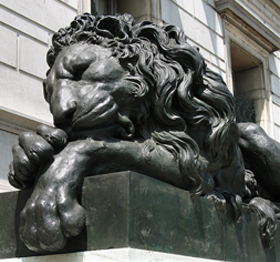Group Cites Widespread Opposition to Proposed Sale of Historic Location, Demands Greater Clarity and Community Engagement During Real Estate Transactions
WASHINGTON, D.C. August 20, 2012 — The Save the Corcoran Coalition (STC) today called upon Corcoran CEO Fred Bollerer, Board Chairman, Harry Hopper, and the Corcoran’s Board of Trustees to demonstrate a greater commitment to maintaining the gallery’s home in Washington, D.C. The request follows the surprising June 4 announcement that The Corcoran’s Board had voted to price the historic Flagg Building that houses the Corcoran Gallery of Art and the Corcoran College of Art + Design.
“The logical and absolute next step after a real market appraisal is hiring a real estate broker and commencing a sale,” said Jacqueline Hiersteiner, member of STC and Co- Chair of the Corcoran Alumni Steering Committee. “The Board of Trustees owes not only the Corcoran community, but also the city of Washington, D.C., more information about this decision and their intent.”
Citing 3,200-signature petition urging leadership not to put the building up for sale before all options have been explored, STC also proposed to the Board a potential solution for expanding the Corcoran College of Art + Design within D.C.
“Corcoran leaders have repeatedly noted the need for space, yet a commercial building is under development adjacent to the museum,” said Jayme McLellan, adjunct faculty member at the Corcoran College of Art + Design and member of STC. “We respectfully ask leadership to negotiate with Carr Properties about discounted or perhaps space donated in kind in this building. It is a natural solution that would address several of the challenges the Corcoran currently faces.”
In 2011, the Corcoran leased the real estate in question to Carr Properties, and later sold that lease without making provisions for more space in the new building for the school. Facing a critical need for expanded studios and classrooms, many associated with the Corcoran College of Art + Design found the decision confusing and concerning.
“There is no reason to believe that Carr wouldn’t have been open to negotiating more space for the College and Gallery had the offer been on the table,” said Washington artist and WETA commentator, Bill Dunlap. “Unfortunately, the only way to ensure it won’t happen is by not asking in the first place. It is critical and long overdue for the Corcoran’s leaders to work towards these types of community partnerships.”
Save The Corcoran believes that the Corcoran/Flagg building is an historic, cultural icon deeply tied to the history of the nation and Washington, D.C., and that it provides an ideal environment for a museum and an art college. A neighbor to the White House, Old Executive Office Building, National Mall and Smithsonian Institution, the current location is a registered National Historic Landmark, one of only 2,500 sites and buildings in the US designated by the Secretary of the Interior.
Moreover, as the oldest private art gallery in Washington, D.C. many believe that a move out of the city would represent not only a violation of the Corcoran’s charter, but a tremendous loss to Washington’s cultural landscape.
“The Corcoran has the best collection of 19th Century American Painting and the best facility for showing it in Washington,” said Jack Rasmussen, Director and Curator, American University Museum at the Katzen Arts Center. “The Corcoran also has a tradition of supporting the living artists of this city. These two crucial and complementary functions cannot be moved to the suburbs. They belong in the heart of our nation’s capital, supported by a partnership of public and private funders and a Board of Trustees fully committed to seeing the Corcoran flourish here. Moving to the suburbs will surely kill the Corcoran Museum of Art and its School of Art + Design, and leave a smoking crater in our cultural landscape.”
Moving forward, STC implored the Corcoran leadership to take a more active role in the ongoing community discourse surrounding the potential sale of the historic building.
“It was incredibly disappointing to learn that although the Corcoran organized two community meetings this summer to discuss the future of the museum, the overwhelming majority of Corcoran leaders and Trustees did not attend,” said McLellan. “The strength of any cultural institution is in the community that supports it, and Corcoran leadership must recognize this. We ask that decision-makers are present and participate at the next community meeting, taking place August 23 at the Corcoran.”




